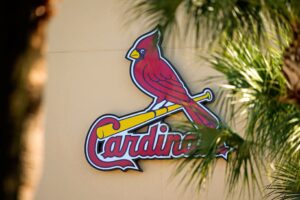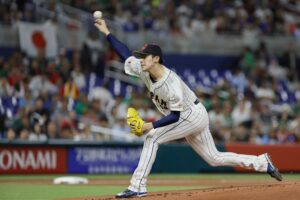Last week, Major League Baseball and the players association announced some potential proposed rule changes. If approved by the 30 ballclubs, they will begin to roll out these changes over the next two seasons. Let’s take a look at some of the potential changes on the table.
Between Innings
The Change: Currently, inning breaks last 2:05 in local broadcasts and 2:25 in national games. The proposal reduces breaks to 2:00 in all games. These are subject to discussions with contracted broadcasters, and, if passed, the Commissioner’s Office will have the right to reduce the breaks to 1:55 for 2020.
Analysis: They’re wanting to reduce game times. The change for a local broadcast is so minuscule that it will do close to nothing. The national broadcast reduction will eliminate one standard commercial or two short-form ones. Will the national broadcasters raise their advertising slot fees? Probably. It looks like they will have to. Since the overall game time reduction from this will be around nine minutes for a standard game, few will notice any effects of this change.
Trade Deadline
Current Rule: Currently, the standard trade deadline is July 31st. There is another trade deadline of August 31st known as the Waiver Deadline. In August, players can be traded if they “pass through waivers,” meaning that, for two days, all other teams in the league have the right to say, “Hey, I want him!” If claimed by another team, the owning team can pull him back and keep him (can only be done once). The team can also let him go completely, but it must pay his entire salary for the rest of the season. The team can also work out a trade with the claiming team, but it must be finalized within two days. If more than one team claims a player, dibs goes to a team within the same league first. After that, priority goes to the team with a lower record.
The Change: The entire Waiver Trade process will be eliminated. The hard trade deadline will be July 31st.
Analysis: Why? What is wrong with the current system? Waiver trades are fun, and it’s not like other teams didn’t have a shot to obtain the guys. Once in a great while, a blockbuster happens – Justin Verlander being sent from the Detroit Tigers to the Houston Astros at the absolute last minute in 2017, for example. Every other team in the league had a shot at him, and no one else pulled it off. Why is this a problem?
All-Star Voting
The Change: Currently, All-Star starters are determined by straight fan vote. Now, there will be two rounds. The first round will be the same as it is now. In late June or early July, there will be a final election day. It will list the players with the three highest vote totals at each position, and fans will select the starter from the three.
Analysis: Love it. This should both add a new layer of excitement and counter any ballot-box stuffing. Plus, the three finalists will receive a monetary bonus.
All-Star Game
The Change: If it goes to extra innings, then all half-innings will begin with a runner on second base.
Analysis: This rule change wouldn’t have been necessary prior to the late 90s, but the game has changed. Given how much attention is paid to keeping pitch counts down and getting everyone on the roster a chance to play, this has become necessary. Good decision here.
Home Run Derby
The Change: The prize pool for the Home Run Derby will be bumped up to $2.5 million, with the winner receiving $1 million. The prize pool last season was $525,000, with the winner receiving $150,000.
Analysis: No complaints. It’s surprising that it wasn’t any higher already. Since the event is continuing to pull in more revenue, it only makes sense for the participants to receive more prize money.
Mound Visits
The change: The maximum mound visits by a manager or coach will go from six to five per game. The limit of six went into effect before this past season. Prior to that, it was one visit per inning per pitcher, just like today, but there was no overall limit in the game. Visits that result in a pitching change do not count toward this total.
Analysis: This is also not a problem. Teams rarely approach that total anyway. If a pitcher needs to be visited that much, he needs the hook.
In addition to the proposals listed, MLB and the MLBPA will form a Joint Committee to discuss any potential rule changes. (Why doesn’t this already exist?)
2020 Potential Rule Changes
Roster Size
The Change: Bye bye, 40-man roster. Currently, the roster size from Opening Day to August 31st is 25 players. From September 1st to the end of the regular season, it is 40. In the postseason, it reverts to 25. With the change, the roster size from Opening Day to August 31st will increase to 26. The minimum number of active players will move from 24 to 25, and for doubleheaders, teams will be allowed to carry 27 instead of the current 26. From September 1st through the end of the season, the roster size will be 28 players.
Analysis: Good move. The problem with the current 40-man situation is that the September call-ups have that month count toward their years of service, meaning that they get closer to being a Super 2 or arbitration eligible potentially without playing. As a result, teams can be hesitant to bring young guys into the dugout for valuable in-game learning experiences. With the roster size going to 28, young minor leaguers who aren’t ready for big-league playing time can still be in the dugouts and learn the ropes from the more seasoned veterans and coaches.
Pitchers
The change: The Joint Committee will determine a pitcher cap. No club will be allowed to carry more. They will have to designate each player on the roster as either a pitcher or a position player before the player’s first day on the active roster. For the remainder of the season, the player’s status cannot change. Position players will only be allowed to pitch in one of the following situations:
- Designated as a “Two-Way Player.” – He must pitch at least 20 Major League innings and start at least 20 Major League games as either a position player or a designated hitter. In these starts, he must have at least three plate appearances.
- The game goes to extra innings.
- Any game where the run differential is seven or more runs when he enters as a pitcher.
Analysis: The pitcher cap is fine, but the rest of it needs further examination. The second half of this rule does not prevent pitchers from appearing as a pinch-hitter, pinch-runner, or position player. Diamondbacks reliever Archie Bradley, for example, hit a pinch-hit triple in the 2017 National League Wild Card game. The 1990s Atlanta Braves, as another example, had starting pitchers sometimes pinch-run on days where they weren’t pitching.
In a final example, the Cincinnati Reds and New York Mets had an ugly bench-clearing brawl in 1986 that saw so many Mets players ejected that manager Davey Johnson ran out of position players. He had to move catcher Gary Carter to third, bring in backup Ed Hearn to catch, and had relievers Roger McDowell and Jesse Orosco play in the corner outfield positions. None of these scenarios would be prevented by the rule. Having said that, one still has to ask what this rule would accomplish and why it is necessary.
Injured List
The change: The shorter injured list duration will go back to 15 days. In 2017, it was reduced to 10, but teams took advantage of the rule to rotate relievers in and out of roster spots in order to keep arms fresher. This also resulted in more pitching changes, which led to longer game times.
Analysis: No problem. If teams are misusing the rule, switch it back.
Three-batter Minimum for Pitchers
The change: Right now, the minimum time a pitcher can be in the game is one batter. This rule will increase that to either three batters or the end of a half-inning, barring injury.
Analysis: Good. No more of these “left-handed specialists” who come in a game, pitch to one guy, and then leave. (Sorry, Mike Myers.) That was all but a waste of a roster spot and made games take even longer than they should have.
In summation…
Again, no rule will take effect unless it is ratified by the 30 teams. Some of these rule changes make sense. The Joint Committee is an especially good idea. The changes that either don’t have a good reason for implementation or will have no effect – the pitcher restriction and the ending of waiver trading – need to be shot down. Baseball is a great game. Let’s make sure that the rule changes are only done if and when they are necessary and for the good of the game.
Main Photo:







